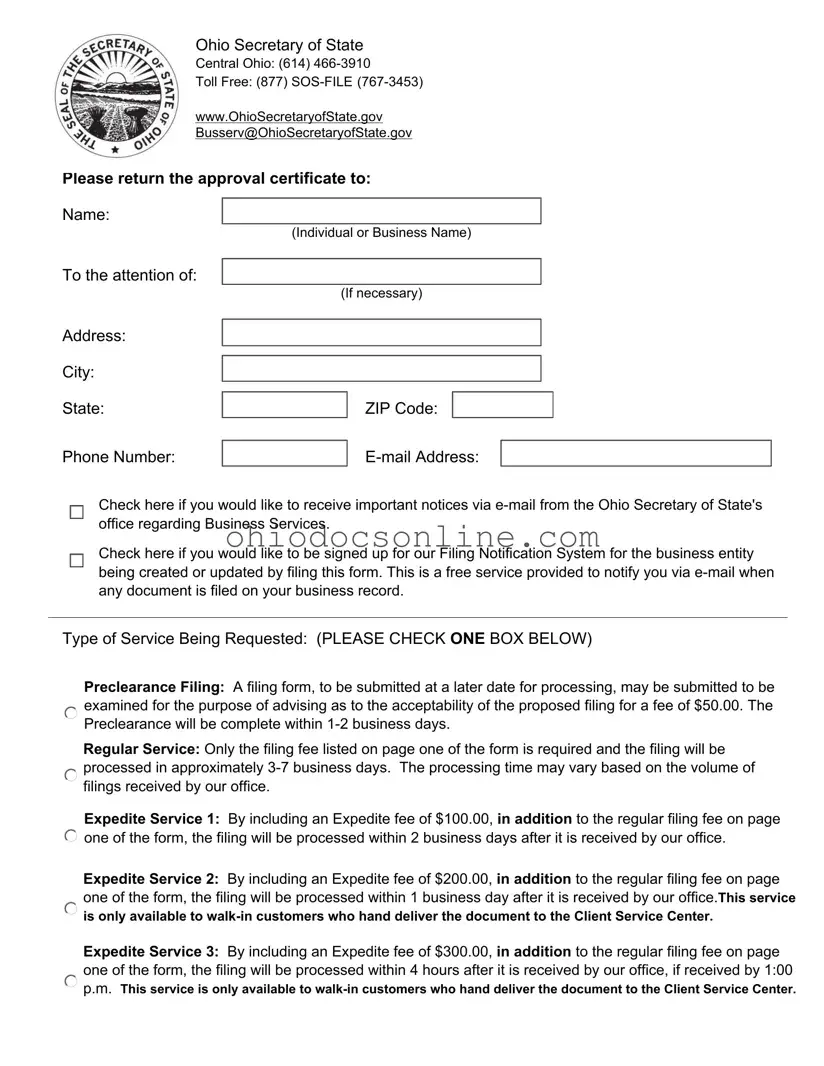Ohio 521 Template in PDF
The Ohio 521 form is a document used to update statutory agent information for various business entities, including corporations and limited liability companies. This form allows businesses to appoint a new agent, change an agent's address, or process a resignation. Understanding how to correctly fill out and submit this form is essential for maintaining compliance with Ohio's business regulations.
Open Editor
